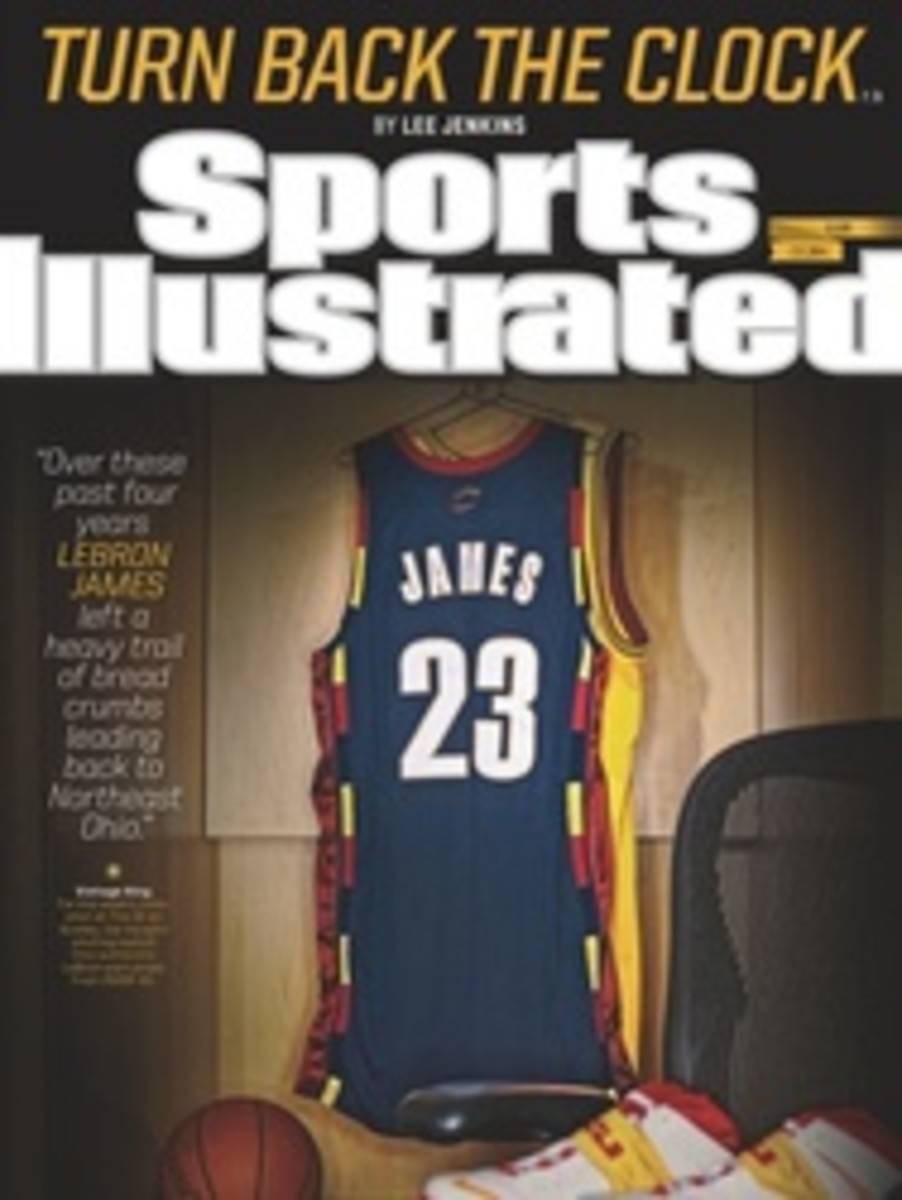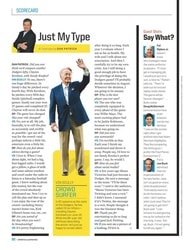
SAN DIEGO PADRES
WHEN THE home team ranks last in almost every meaningful offensive category, has scored one run or fewer in nearly a third of its games, and is on the way to having the lowest batting average since the Dead Ball era; when the highest-paid player is hitting .226, the second highest .182 and the guy who just signed a six-year, $35 million extension .162; when three projected starting pitchers are recovering from Tommy John surgery, the ace is out with a bum shoulder and the general manager is fired two weeks after drafting Johnny Manziel ... well, that leaves a lot of downtime to hang out in the terrace atop the Western Metal Building, draining Ballast Point pale ales and talking about the uniforms.
The Padres have changed their primary uniforms 12 times since the franchise was founded in 1969. They've worn brown and yellow, brown and orange, brown and yellow and orange, blue and orange, blue and white, blue and tan. They've experimented with two colors of pinstripes, several shades of camouflage and a beige earth tone called sand. Their sartorial crisis started early: They tweaked their look in '72, '74, '76, '78, '79 and '80. Sometimes the alterations were subtle (adjusting script, adding buttons, erasing the SAN DIEGO over the PADRES), and sometimes they were as severe as gold pants. When the Pads won the '84 National League Championship Series, they could not celebrate simply with a commemorative T-shirt. They overhauled their wardrobe again. "They are the alltime champion," says preeminent baseball uniform historian Bill Henderson, "of changing everything."
In 1990 a group fronted by television producer Tom Werner bought the Padres. Werner is remembered in San Diego for three reasons: He invited Roseanne to sing the national anthem at Jack Murphy Stadium, where she screeched the lyrics and grabbed her crotch; he macheted the payroll to $13 million, and pawned off Gary Sheffield and Fred McGriff in the span of a month; and he did away with brown, the only thread that connected the franchise through its first two decades. Some good times were had in blue—the Padres won the division in '96 and the pennant in '98, after Werner mercifully sold to software tycoon John Moores—and the orange accents linked the club to its eye-popping past. But in 2004 the Pads moved to Petco Park, and orange did not make the trip downtown. The team of my youth, as funky and colorful as Ocean Beach, was duller than an office park in Orange County. Outfitted in navy and white, are they the Brewers or the Royals, the Mariners or the Blue Jays? It's hard to tell.
The Padres have played in purgatory for five years, mainly because Major League Baseball will allow just about anybody to buy them. Moores announced in 2009 that he was selling to a group led by former agent Jeff Moorad, who needed a layaway plan to complete the purchase, and three years later he withdrew his application. In '12 the franchise was bought for $800 million by another syndicate, headed by Ron Fowler. Three GMs have departed since '09. The team's best hitter, Adrian Gonzalez, was traded, and so was its best pitcher, Mat Latos.
Padres fans, easygoing by nature, are not the type to picket the front office. They do not lobby media members. Instead they pour their energy into a fashion statement. They wear brown. They talk about wearing brown. They tweet about wearing brown. They sign petitions and send emails on the subject of wearing brown.
On the field Padres jerseys are navy and white, with names like GYORKO and ALONSO across the back. In the stands they are chocolate and mustard, with names like GWYNN and WINFIELD. Nearly a quarter century after players last wore a stitch of brown, the palette has become almost as prevalent as it was in the Anchorman period. One section of the team store is stocked with brown merchandise. The popular pregame bar, Bub's @ the Ballpark, outfits servers and patrons in brown caps with the 1978 font. Even Jay Z rocked an '82 throwback in a music video. After club president Mike Dee was hired last summer, he went to a game at Petco Park, and a TV reporter asked for an interview. The first question: "Are you going to bring back brown uniforms?" At first, Dee laughed. Then he realized the reporter was as serious as an Andrew Cashner four-seamer.
"This is a passionate topic around here," says Padres fan Jordan Stark. "We've had so many changes to our identity. The stadium changed. The owner keeps changing. The roster is constantly changing. Brown is our identity. People say that it's disgusting or gross or weird. We like the weirdness of it." Stark co-runs Bring Back the Brown, a campaign to make over the Padres' duds for a 13th and final time, reincorporating brown into a modern design. Partners include the most influential team blogs—Gaslamp Ball and RJ's Fro, Avenging Jack Murphy and Woe, Doctor!, Friarhood and LobShots—which trumpet the cause as if it's a major free-agent acquisition.
Nostalgia is a powerful force in sports. In recent years the Orioles returned to their former logo and the Blue Jays to a variation of theirs. The Astros brought back orange and the Royals baby blue. The Padres sported their 1984 getup for three games in May against the Cubs, handing out 40,000 replica jerseys one night, but afterward Fowler casually termed the brown brigade "a vocal minority." The remark so riled fans that chief marketing officer Wayne Partello appeared on the club's self-produced TV show to address the outrage. "You can see the movement," Partello says. "I love the movement. I love the debate." Partello and the new leadership are currently conducting market research to gauge support for a switch.
Maybe Fowler is correct that only a fervent few are so invested in going brown. Listen, for example, to this one rabble rouser from Poway by way of San Diego State: "How many teams have blue? How many have red? But none of 'em have brown.... I just thought there was something neat about that. I just thought it looked beautiful. More than just beautiful, I liked the sentiment behind it of, 'This is who we are.'" That firebrand was Tony Gwynn, two years ago, to former Padres beat writer Tom Krasovic.
On June 16, Gwynn died of cancer, and 30-year-old Chris Garcia went to the game two days later. He wore a brown Padres hat and brown Padres shirt. He sat in the rightfield bleachers with the Right Field Mission, a congregation that dresses in brown friars' robes. After the Pads won, Garcia strolled out to Gwynn's statue behind the right centerfield fence, where seven fans stood arm in arm. They were all in Gwynn jerseys, spanning his career from brown to blue. Garcia snapped a pic that was retweeted more than a thousand times. "I was born in the summer of '84, so I mostly saw Tony in blue," Garcia says. "But I'll always think of him in brown." The Padres were brown when they reared Dave Winfield and Ozzie Smith, Gwynn and Roberto Alomar. They haven't developed a memorable position player in the two-plus decades since.
A friend recently handed down to me his '79 home Padres jersey that no longer fit. I sent it to Roger Hovey in San Diego, so he could embroider Ozzie's name and digit on the back. Hovey, a Padres uniform expert who runs a home business embroidering jerseys, can tell you which year they went from block lettering to cursive, which year they adopted the number on the front of the jerseys and which year they eliminated it. After a week Hovey's work was finished, but I was out of town and unable to swing by his shop. "Take your time," Hovey told me. "People here will want to see this."
PHOTO
Photograph by Andy Hayt San Diego Padres/Getty Images
MEN IN BROWN The fans who snapped up 40,000 1984 replica jerseys in May think outfielder Cameron Maybin looks better in the old unis.
PHOTO
CHRIS GARCIA
UNITED COLORS Nothing illustrates the Padres' penchant for changing their look better than the multihued tribute to Gwynn, who wore six color combinations during his 20 seasons with San Diego.

